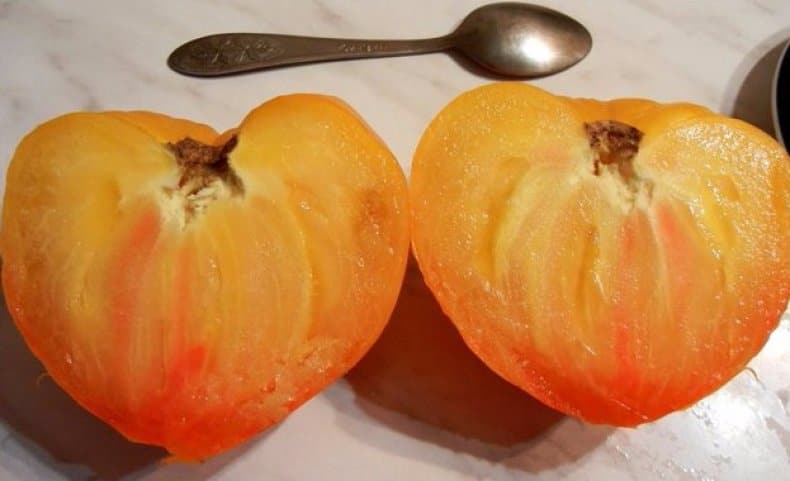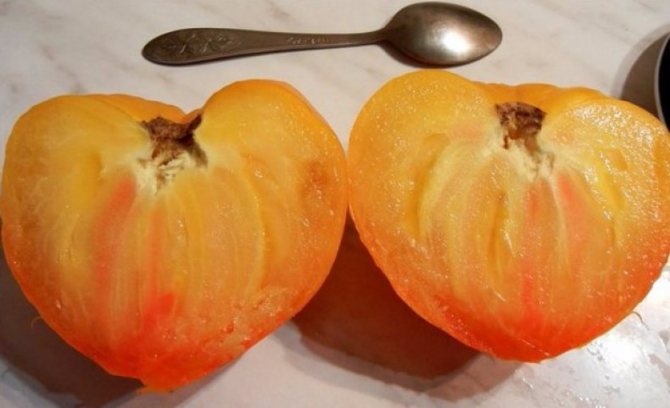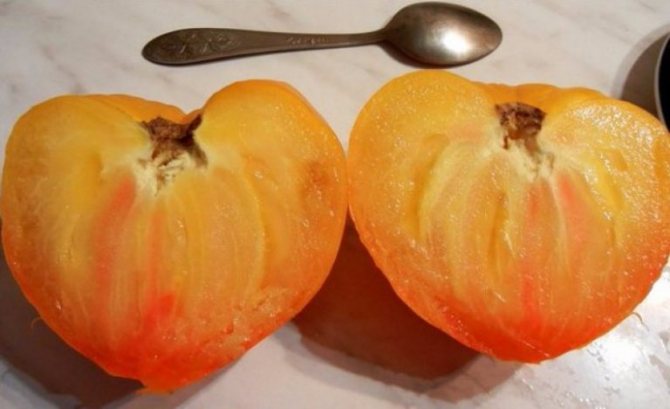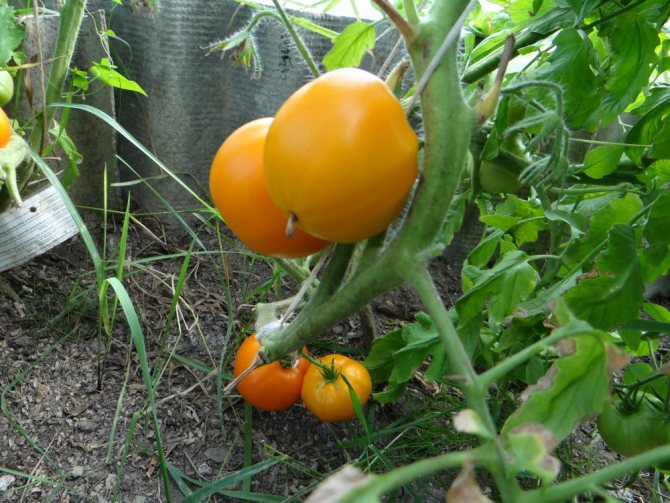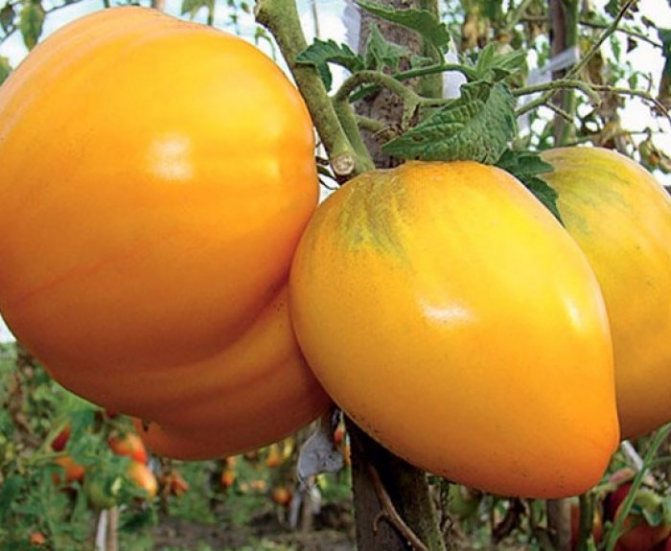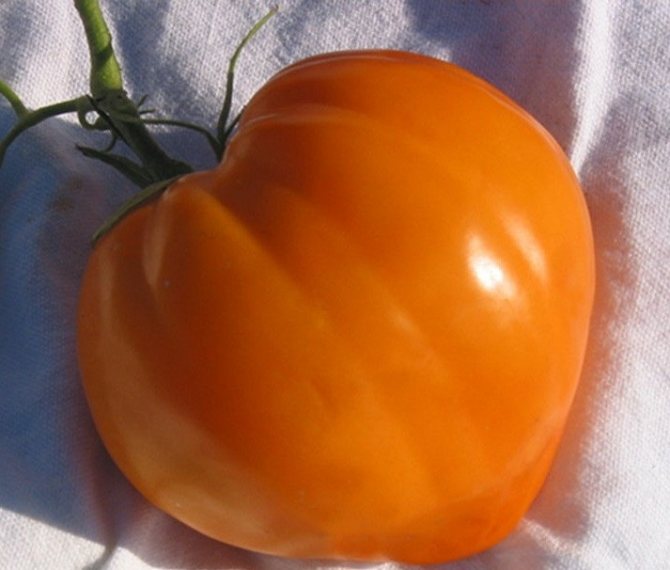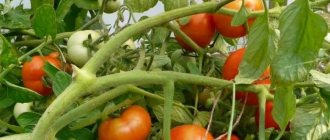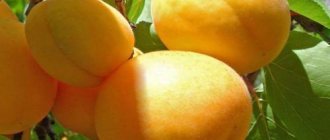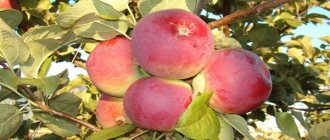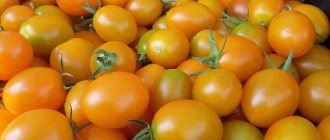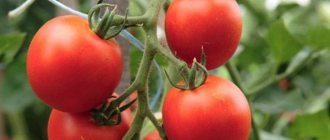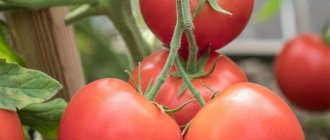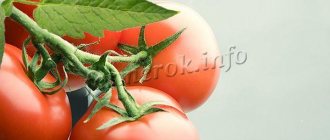Tomato varieties of Siberian selection have amazing qualities, thanks to which it becomes possible to grow a culture that is far from cold-resistant in a cold region. Among the yellow-fruited tomatoes, the Golden Domes are especially honored. The variety has long been known and loved by gardeners. It was entered into the State Register of Breeding Achievements of Russia in 2005, although it was grown long before this event. The well-recognized tomato was authored by V.N. Dederko, S.V. Ugarova and T.N. Postnikov. Due to its high adaptive qualities, the State Register recommends growing the variety in the open field, and any region of the country is suitable for cultivation.
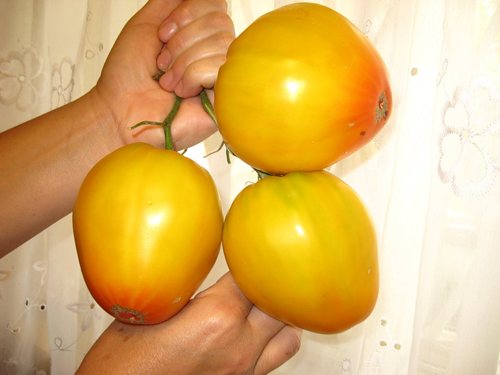
Description of the variety
A summer resident needs to study the characteristics to obtain complete information about the type. This information makes it possible to get an idea of the variety. Understand what a person needs in order to grow him on the site.
Siberian selection
Producers breed varieties that are adapted to the harsh growing conditions. Among them are unfavorable weather conditions, a short summer, a sharp change in weather, and more.


Plant appearance
Tomatoes Golden domes are grown in open and protected ground. The plant type is determinant. The maximum height of crops is 1.5 m. The leaves are medium, the inflorescence is complex.
Fruit characteristics
The fruit is shaped like a heart. The shade of the fruit is yellow-orange. The mass depends on the care and formation of the bushes. The maximum weight is 800 g, the average weight is 400 g. The taste is excellent.
Farmers reviews
Anastasia from Crimea. Last season, the son-in-law brought the seeds of this hybrid from a trip. Self-grown seedlings were planted in a garden bed without shelter. The bushes turned out to be powerful, tall. She formed a tomato into 2 stems, tied it to a pre-installed trellis. When autumn came, I pinched the top.
Elena is from the Moscow region. The tomato was grown in a greenhouse. I left 1 stem per bush. I fed them with special mineral mixtures. At the end of June, the first "dome" was ripe. The tomato tastes good, but rather dense. What surprised me was the amount of fruit. Until the end of August, I collected 3 buckets from 6 bushes. They ate in salads, salted for the winter, squeezed into juice.


Pink domes are a great option for both personal and farm use. The unpretentious and at the same time high-yielding tomato will more than pay off all the growing costs.
Gardeners unanimously evaluate the Ob domes as a high-quality tomato crop that will not let you down in cold or hot weather and will always reward you with a generous harvest. Many people highly appreciate the taste of vegetables, noting their pleasant sugar content, which once again confirms the similarity with persimmon, and not only in appearance.
Valentina, Kostroma: “The hybrid is the best in my collection. Tomatoes are sweet, aromatic, well suited for making juices, mashed potatoes, salads.
It's easy to look after, you just need to remove the stepsons to the first brush, tie, feed and water. I'm glad".
Konstantin, Bykovo: “I planted the tomatoes in the greenhouse. The first fruits were harvested in early July. The plants did not hurt, they grew well. Fed up twice a season. There are a lot of vegetables. I will definitely plant some more. "
Ekaterina, Rostov-on-Don: “I grow it in the open field. Due to its small stature, it is easy to care for.But be sure to regularly water, feed and tie up. Always with the harvest. "
Gardeners choose "Red Dome" not only because of its short ripening period. The variety is attractive for its high yield, large-fruited and excellent taste. Its fruits look unusual and beautiful. The dense skin allows them to be stored in the cellar for several months.
Pros and cons
The plant has both positive and negative characteristics. The summer resident will have to appreciate the tomatoes and the quality of the plants themselves.


Advantages:
- Taste characteristics.
- The best variety for dietary nutrition.
- Acid-free.
- Keeps well unripe.
Disadvantages:
- Demanding formation.
- Predisposition to cracking.
- Unsuitability for canning as a whole.
Experienced summer residents eradicate the shortcomings, showing ingenuity.
Tomatoes Golden domes.
This is my favorite variety. Not only for the taste. We have almost all delicious tomatoes) It is very early, despite its large-fruited, and very fruitful. The fruits are not at all sour, however, and I cannot say that they are sweet-sweet. They are of some kind of "dietary" taste. They have little juice, few seeds, for me they are excellent salad tomatoes.
The main planting of tomatoes in my greenhouse. But I plant a little and "on the street". And here is a documentary story about the life and success in the tomato business of one bush of the Golden Domes last summer. I dropped him off at the corner near the greenhouse. And it turned out to be very successful - watered and sometimes fertilized along with the greenhouses. And the bushes planted here and there in the garden were completely abandoned. And they dried up without watering and watching - there was a severe drought all season, abrupt changes of either prolonged cold or exhausting heat.
So, May 30th. Golden domes are a small bush (consisting of two, planted in one hole) on the left. In a black bag - Pink tomatoes, as well as two roots (bush). They are clearly larger and more powerful, tk. from the cup were planted in a bag, much earlier in time, and at first stood in the greenhouse. But maybe I'll write about them later. As well as about the beans that wedged into this trinity.
June 25. Somehow huge brushes appeared very quickly. These are the first two brushes. And there would be one bush - there would be one, and half the yield.
July 2. The small ovary shows that they are growing! )
July 29. Ripening did not begin for a long time - at first it was very cold, and then I had to cover it with hay from the burning sun - when I already noticed that in one day there were burns on the fruits. Shooting before removing the first ripe fruits - no need to keep them until they are completely softened. So they can be stored for a long time, because you can't eat them all on the same day. And the season here, not like in Brazil, can get colder at any time. It is necessary to allow others to mature too.
The bush is very sparsely leafy. This is a plus both in greenhouses and in the open field, when during our summer there is often not enough sun. And after the rain, it is quickly ventilated. It was irrelevant this summer. But I will note this necessary characteristic. The bush was fastened very simply - it was tied to one arc stuck into the ground with many ropes. These arcs are used all year round. In winter, they hold curled roses, and in summer they are snapped up among all kinds of plantings. Therefore, I pick up all the wire in the area, and always ask you to bend an arc out of it. Superfluous will never be.
July 30 - August 1. I cut off 2 more pieces from the brush, but the small ones still remained there. It can be seen that these are the largest tomatoes in general among all varieties - they stand out against the background of others. Yes, the harvest is very good now, in the photo it did not fit into the frame, there is still a third shelf at the top. And such full boxes stood until autumn, constantly replaced by new ones.
What is the total harvest by August 1, you can add.1682 + 785 + 424 = 2891 But this is just the beginning! Judging by the second tassels, there are even more delicious tomatoes waiting for us! )
In addition to these two bushes in the wild, Golden Domes grow and mature in the greenhouse. The yellow fruits in the other boxes are what they are. And it is clear that they are not as large as from free bushes. At the same time, a huge green brush fell from one greenhouse bush. Apparently, it touched her when watering - by that time the space in the aisles had already very narrowed. And her weight, of course, did not reach the possible. Then the fruits ripened, but they did not have a bright taste, and they had to be prepared in the form of "just tomatoes in their own juice." (This is my most popular template, fast and convenient). And the largest fruit grew in a greenhouse - 687 g. Not very large, of course, but the watering was also very moderate.
And here are the second brushes from our bush. (August 9 and August 23) In the last collection I decided to remove three green fruits. And cut off the tops of the bushes. But then it was so warm that even a few remaining ovaries grew and began to ripen. I have not fixed them, not in the photo, anywhere. So let's consider it just +)
How much we get 2955 + 2163 = 5118. And in total - 5118 + 2891 = 7709 plus)) From one hole, in the open field, even without covering material. Not bad! )
The most difficult thing was not to forget to weigh all the fees. Hope I haven't missed anything. After all, in parallel, I was still making entries in the ledger))
Now there are these pleasant memories and the desire to repeat the experience next summer. It is unlikely that it will be similar to the past ...)
In the meantime, there will be the following reports and reports)
Agrotechnics
Proper cultivation is the key to a future harvest. Fulfillment of all requirements will allow you to get a high yield.
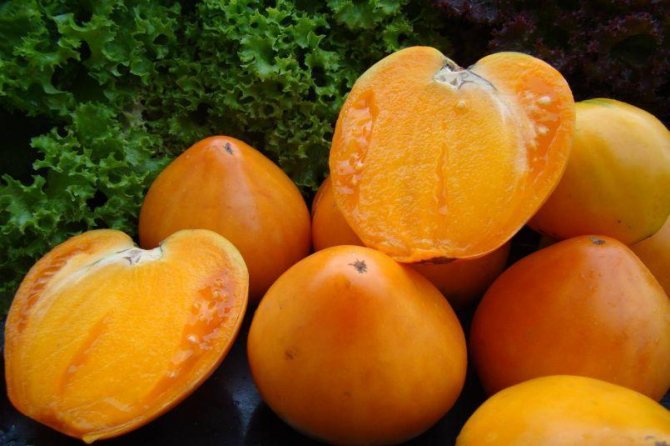

Preparation and planting of seeds
Before planting seeds, you need to check them. In 1 liter of water, dilute 1 tbsp. a spoonful of salt, pour the seeds there. Those that float are unsuitable for landing. The rest are washed and dried.
For 30 min. the seeds are dipped in a solution of potassium permanganate. Then washed with warm water and dried.
For planting, the soil is mixed:
- 1 part of sod land;
- 2 parts of humus;
- 1 part river sand.
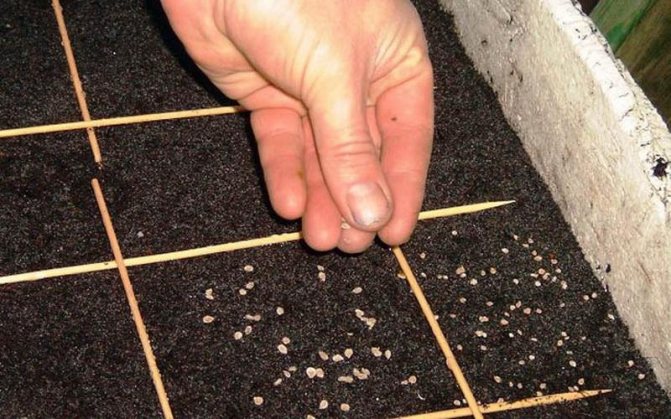

Watered with a weak solution of potassium permanganate and make grooves at a distance of 5 cm, a depth of 2-3 cm. Sow the dried planting material. Sprinkle with earth and cover with polyethylene. Place in a warm, dark place until sprouts appear.
See also
Description of tomato variety Juggler f1, breeding methods and pest control
To read
Care and planting of seedlings
Plants need high-quality care, as the foundation for the future harvest is laid. Loosening is carried out after each watering.
Diluted manure and complex mineral compositions are used as fertilizers.
When the second real leaf appears, the tomatoes are dived into separate containers. Summer residents are advised to use peat pots. So the root system is not disturbed when transplanted to a permanent place.


The summer resident determines the date of planting in a greenhouse or soil on his own. The garden bed is prepared in advance, watered and make holes. The distance between the bushes is 40 cm, between the rows is 50 cm.
How to water
Watering the seedlings is carried out in a timely manner, as the top layer dries. It is impossible to transfuse, but the plants should not dry out either.
At first, they irrigate the ground with a spray gun, so the roots of immature seedlings are not washed out. Then watered gently between the grooves. Make sure that the roots are not washed out.
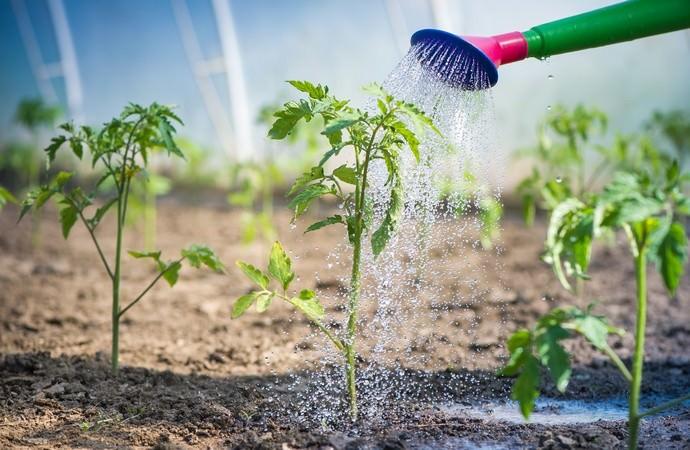

Conditions for maximum fruiting
Observance of simple rules will help to get the maximum yield:
- correct fit;
- selection of location and soil;
- implementation of agricultural techniques;
- the formation of bushes;
- introduction of dressings;
- timely watering;
- mulching and loosening.
Compliance with the requirements for planting and the recommendations of experienced summer residents leads to an increase in yield.
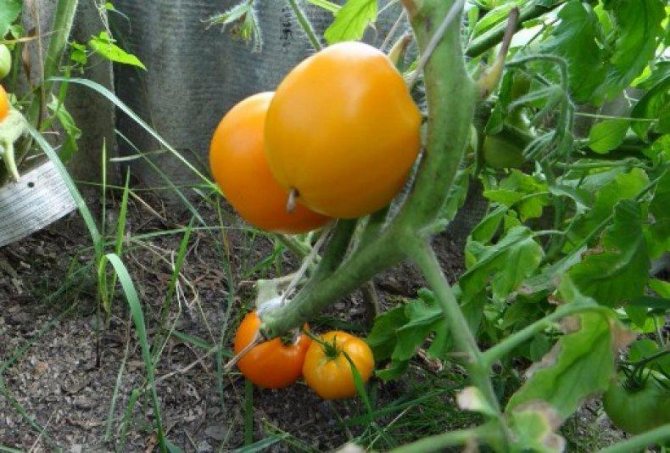

How to grow tomato seedlings on your own?
A good harvest depends on properly prepared seedlings. It is at the stage of shoots that the immunity of the future plant is formed, the potential for its growth is laid. Therefore, carefully consider the recommendations for the selection, preparation of seeds and care for them during the growth process.
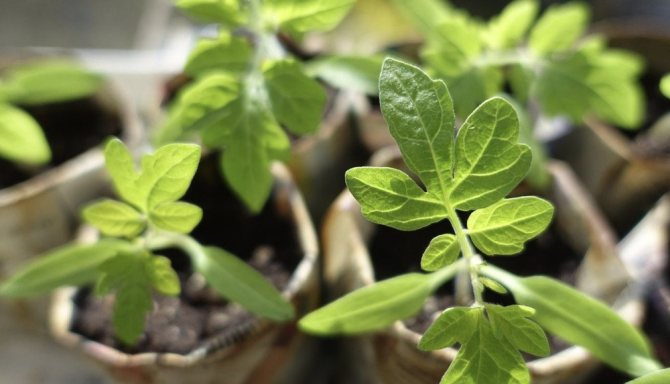

Sowing time
Plants, their viability and yield depend on seasonality and weather conditions, so it is important to know about the timing for planting.
The exact dates of planting seeds depend on regional climatic conditions, but experts recommend focusing on the following parameters:
- end of February or early days of March;
- 2 months before transplanting future shoots into open ground.
Did you know? «Non-toxicity
»
tomatoes in 1822 was proved by Robert Johnson. He did it in the city of Salem in front of 2 thousand spectators, having eaten a bucket of tomatoes.
The soil
The soil is the main source of vitamins and useful minerals for plants, therefore it is worth approaching its selection responsibly and starting this process in the fall.


For Golden Dome tomatoes, a mixture of garden soil, humus and sand in a ratio of 2: 1: 1 is suitable as soil. Mix all the components evenly, and then spread the soil in the boxes and send it for several months, until spring, in a cold place. A long stay in the frost will qualitatively disinfect the soil from small pests.
A day before planting crops, move the soil to a warm room so that the soil has time to warm up for seeds.
Important! Do not take the ground in which potatoes, peppers, eggplants were previously grown as a basis for tomatoes, otherwise there is a risk of transferring diseases characteristic of the nightshade family.
Growing tank
Today the choice of containers for seedlings is rich. Make your decision based on budget and personal preference.
Many people prefer versatile wooden or plastic boxes, they are inexpensive and practical. However, be prepared that at some point you will have to pick the seedlings.


If you do not want to waste time planting young sprouts, then use individual containers right away:
- peat tablets;
- seedling cassettes;
- plastic glasses.
Often gardeners grow tomato seedlings using improvised means: ordinary plastic bags, milk cartons, cut plastic bottles.
Seed preparation
Be sure to prepare tomato seeds before planting:
- Prepare a pink manganese solution and leave the seed in it for 25 minutes.
- After the specified time, rinse it thoroughly under running water.
- After that, it is worth nourishing them with growth stimulants. To do this, you can use both purchased preparations ("Ivin", "Epin"), and natural remedies: aloe juice, honey solution (1 tablespoon per 200 ml of heated water). Leave the seeds in the stimulant overnight.
- The next day, fold them on a sieve to glass the liquid, and then spread them in a thin layer on paper to dry.
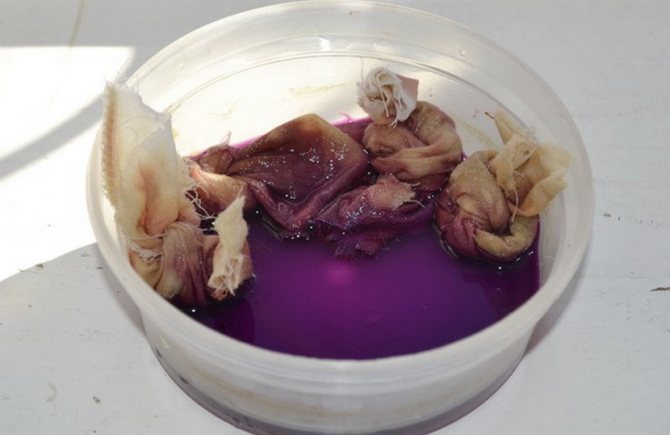

The seeds are now ready for planting.
Did you know? 1 glass of tomato juice contains the daily requirement of vitamins C and A.
Sowing seeds
For better germination and development of future plants, planting is carried out on a day favorable according to the lunar calendar.
Landing is quick and easy:
- The soil prepared in the boxes is leveled.
- Rows are marked with a depth of 1 cm with a distance of 5 cm between them.
- Water is poured into the resulting furrows to moisten the soil well.
- Spread the seeds at intervals of 1-1.5 cm.
- The crops are densely covered with earth and the upper soil is slightly moistened with water.
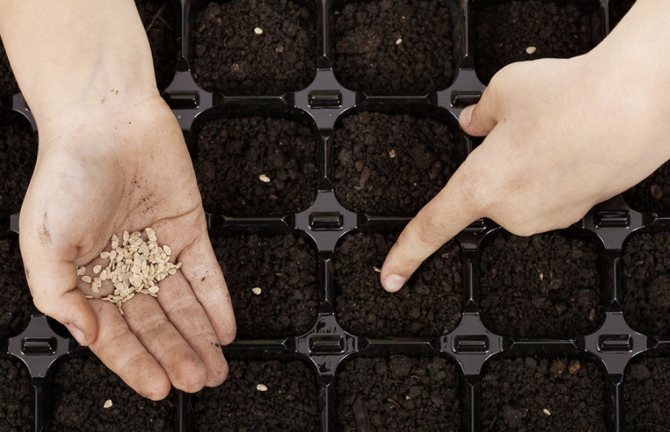

Seedling care
In the early stages of growth, seeds need special conditions.
To do this, the boxes with crops are covered with sheets of glass or a thin plastic film, which does not allow the earth to dry out, and the containers themselves are placed in a warm place (it is possible near a battery or other heat source).
Important! Within 6
–
8 days after sowing, the first shoots will appear.
After that, the containers with crops are moved to a well-lit place. A regular window sill flooded with daylight or a table with an electric lamp will do.
The optimum temperature for the growth of hatched seedlings will be + 23 ... + 25 ° С. Besides heat and light, tomatoes love moisture. Water them regularly as the soil dries, but do not get too carried away with this process, because overflow can provoke the development of pathogens.
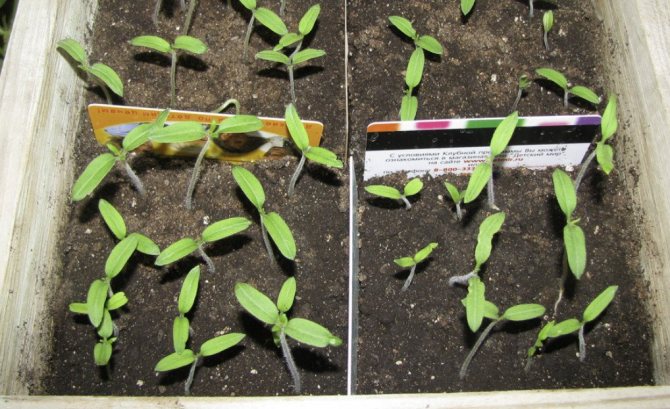

After each watering, do not forget to loosen the soil (an ordinary table fork is suitable for this) so that the roots of the plants receive oxygen. Loosen the soil carefully, without sudden movements and shallow, otherwise the root system of the shoots will suffer.
After 2-3 weeks after the emergence of sprouts, fertilizing can be done with complex fertilizers. You can do without the procedure if you fertilized the soil with high quality in the fall at the stage of its preparation.
To plant tomatoes in boxes or large trays, you need to pick them at the stage of formation of 2 leaves. It is not necessary to transplant future tomatoes into individual containers, you can use boxes, just increase the distance between rows to 10 cm, and between plants - up to 4-5 cm.
Hardening of seedlings
Shortly before planting tomatoes in open ground, it is worth taking care of their cold resistance, otherwise a sharp movement from the greenhouse conditions of a room to a changeable climate to fresh air can adversely affect them.
Did you know? The tomato has long been considered an aphrodisiac, but this theory has been scientifically disproved.
The first stage of hardening plants is to remove the protective coating from the boxes and reduce the temperature in the room where they are located.
After 1-2 weeks, the room is ventilated on sunny, warm days, avoiding drafts. Open access to fresh air for a short time, for 1–2 hours, gradually increasing this time to 5–6 hours. Just make sure that the soil of the tomatoes does not overcool, otherwise the root systems of the shoots will die.


The final, pre-planting hardening is carried out 1-2 weeks before disembarkation. In the room, the temperature is reduced to + 12 ... + 15 ° С at night. And already in 4–5 days, the indicators are aligned with the conditions of the open ground, where the seedlings will be transplanted. For the last 2-3 days, the shoots are always in the fresh air.
Bush care
After planting in an open ground or greenhouse, the plants should be properly looked after. Watering as needed, Golden Domes are prone to cracking. Therefore, watering is normalized. Moisturize regularly and abundantly, without letting dry. Plants need supports, bushes are tall, they are tied to stakes. The hands also break off under their own weight. Therefore, they are tied up individually.
Summer residents recommend forming plants with 2-3 stems. It is not necessary to remove the growth point in the open field. Tomato Golden Domes do it themselves. Loosened after each watering. Thus, they provide oxygen access, reduce weeds and retain moisture in the soil.
Some growers practice mulching using sawdust, rotted straw and other materials at hand.
It is recommended to feed tomatoes 3-4 times per season:
- a week after transplanting to a permanent place;
- during flowering;
- fruit formation;
- before ripening.
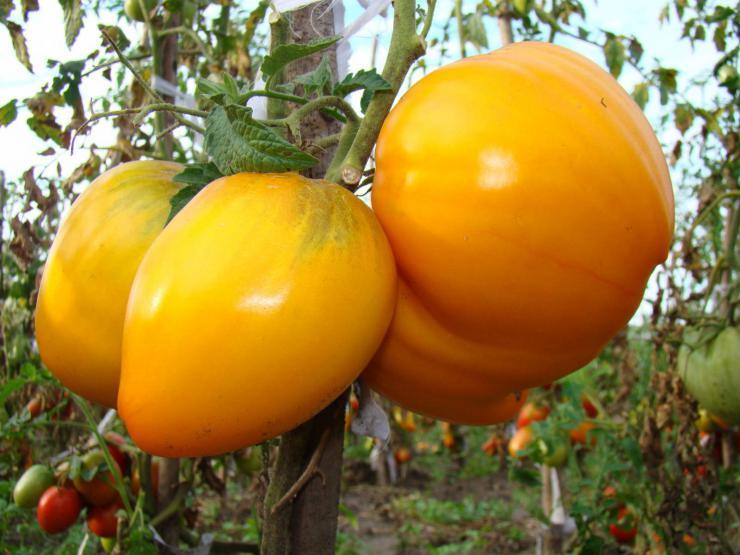

Use minerals and organics, observing the measure. Overfed plants form a green mass without paying attention to the ovary.
Requirements for growing conditions
Tomatoes are characterized as unpretentious. Growers note that culture responds positively to increased attention and care. The recommendations should be followed:
- allowed to use organic growth stimulants;
- before planting, the seeds are soaked;
- can be planted after the seedlings reach 47-53 days;
- grow well after cauliflower, carrots;
- there should be a distance of half a meter between the bushes.
It is important to keep track of watering.2 liters of water are poured under each bush, watered once a week. With abundant watering, the risk of fruit cracking increases. Despite the resistance to pests, the bushes are additionally treated with insecticides.
Diseases and pests
Disease prevention is carried out by summer residents on their own. The planting technology, care features are observed.
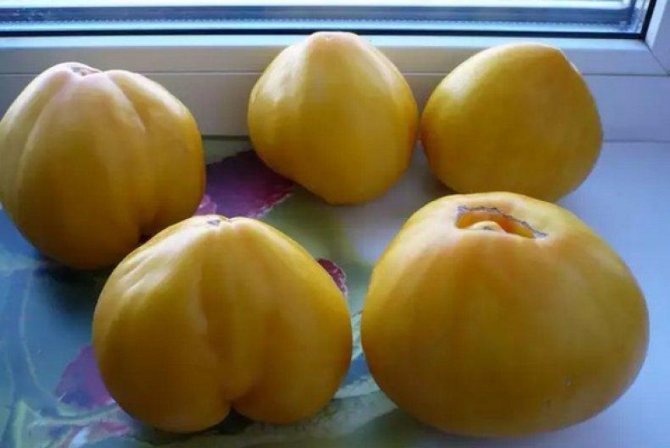

The Golden Dome tomatoes are resistant to crop diseases. For prophylaxis or after the detection of signs, they are treated with chemicals. After flowering, it is undesirable to use insecticides and fungicides, since the substances will remain in the fruits, then enter the human body. They use folk methods of fighting insects and diseases.
See also
Description of the tomato variety Wonder of the World, its characteristics and productivity
To read
How to grow tomatoes: video
Among the red varieties of tomatoes, there are surprisingly tasty and aromatic ones. Honey domes are a hybrid with sweet flesh with hints of honey, beautiful heart shape. In addition, its bonuses include productivity, stamina and disease resistance.
| Early ripe (90-95 days) | Determinant (70-80 cm) | Salad | For open ground | 120-130 | 12 | Orange, fleshy, firm skin. There are up to 6 fruits in a cluster. |
| Height | Pick-up location | Ripening terms | Fruit color | Fruit size | Origin | Fruit shape |
| Undersized | Greenhouse, Open ground | Early ripe | Orange | Middle | Hybrid | Heart-shaped |
Fruit use
Large-fruited tomatoes do not allow the use of vegetables for whole-fruit canning. Therefore, summer residents use Golden Domes for:
- juices;
- dressing dishes;
- fresh salads;
- refueling canned goods in the winter;
- preparation of winter platter, where tomatoes are cut into slices, and much more.
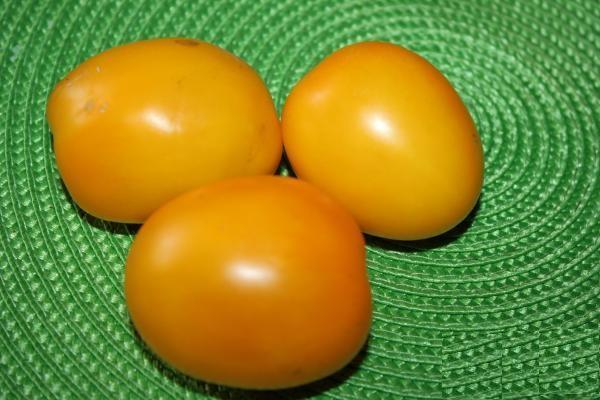

The use of tomatoes in home cooking depends on the imagination of the housewife and the wishes of the household.
Advantages and disadvantages
The heat-loving plant tolerates low temperatures; it can be planted in beds at the first warming. The advantages include early maturity, gradual uniform ripening and rich flowering. Disadvantages of the variety "Golden Domes":
- formation is required;
- overripe fruits crack;
- not suitable for closing in banks.
Gardeners neutralize disadvantages in various ways. To prevent the fruits from cracking, watering is reduced, and cut tomatoes are preserved. The peel of tomatoes is thin; they are not suitable for long-term storage.
Analogs
Golden domes have several varieties and hybrids of the same type. Plants with similar characteristics and qualities.
Domes of Russia
An early large-fruited tomato, the height of an adult plant is 2.5 m. 3-4 fruits are formed in one cluster. The average weight of one tomato is 0.5 kg, a shade of pink. Subject to the norms of planting and care, up to 15 kg of tomatoes are harvested from 1 bush.
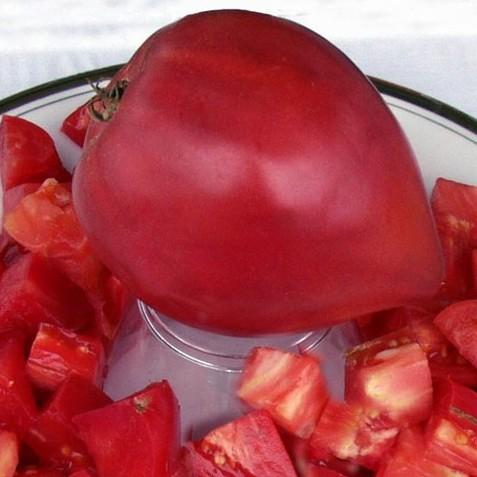

Caring for a plant is to comply with standard agricultural practices. Garter and shrub formation are required.
Honey domes
Low bushes are fruitful. During mass ripening, covered with many medium-sized fruits (maximum 150 g), yellow in color. Garters and shaping are not required, the plants are unpretentious in care. Productivity from one bush is 2.5-3 kg.
F1 pink domes
The hybrid ripens early. Heart-shaped pink tomatoes reach a size of 0.25 kg. The peculiarity of the variety is that the tomato does not crack. With proper care, the yield is 25 kg per m2.


Ob domes
The plants are not tall, the maximum size is 50 cm. The fruits are red and large. The mass reaches 250 g. 1 bush gives 5 kg of fruit, provided that all planting and care requirements are met.
Russian domes
Early ripening, high tomatoes. The plant reaches 2.5 m in height. Fruits are red, up to 0.2 kg.
Red dome
Ready for use 3 months after germination. Bushes are small, up to 0.7 m.With proper care from 1 plant, the summer resident receives 3 kg of vegetables. Minimal care, no shaping required.


The nuances of growing in open ground and in a greenhouse
In the greenhouse, the culture is planted with 3-4 seedlings per 1 sq. m. This is due to the fact that the height of the plant in the greenhouse is higher than the street counterparts and reaches 70 cm.
The mass of greenhouse vegetables can reach 300 g. Yields up to 6 kg per bush.
In protected ground, the plant is led in 3 or 4 stems, while in unprotected ground, it is formed in 5 stems.
In the open field, the culture is less susceptible to infectious outbreaks; according to numerous reviews, Ob dome tomatoes are usually healthy all season. In the greenhouse, due to the high temperature and high humidity, the plant is often attacked by mold. Regular airing will relieve it.
After the tomatoes are moved to their permanent habitat, they are cared for.
Watering
Golden domes love high-quality watering, it is important to moisten the soil around them during flowering and fruit setting. Otherwise, tomato pollen becomes sterile, and if the fruits are tied, they will not be able to gain weight.
Therefore, the bushes are watered 2 times a week in the late afternoon, when there is no sun. For each bush, at least 2-3 liters of water are used, depending on the weather conditions (less water is required in cloudy weather, watering is increased in hot weather).
Did you know? Yellow tomatoes are tastier, and red ones are healthier: they contain more vitamins and minerals.
- pouring water under the root so that it does not fall on the leaves;
- using drip irrigation;
- equipping along the row of canals-recesses closer to the root zone of the bushes;
- placing a plastic bottle without a bottom between two bushes, where liquid is poured, which is gradually distributed between the roots.
Top dressing
Periodically, during watering, the growing tomatoes are fed. This is done once every 2 weeks, if there are no signs of a lack of one or another element.
As fertilizers for tomatoes, Golden Domes use mineral complexes in the form of solutions, which are purchased in specialized stores, or natural substances:
- humus;
- compost;
- the top layer of bog peat.
Important! After fertilization, it is advisable to loosen the soil in order to improve the access of nutrients to the roots of tomatoes.
Stepping
The bush of the Golden Dome variety grows 90–150 cm in height, so pinching and its formation cannot be avoided. Experts recommend growing this species in 2-3 stems.
The need to remove additional shoots arising in the axils between the main stem and the leaf occurs regularly (tomatoes can release up to 40-50 stepchildren per season).
Soil care
It is necessary to loosen the soil after each watering. Then moisture is better stored in the soil, and oxygen is more actively supplied to the roots. Therefore, the first loosening is carried out immediately after transplanting the seedlings, and the next - after 1.5-2 weeks.
As needed, weeding is carried out between the rows in order to prevent the appearance of weeds.
Did you know? Today, more than 10,000 varieties of tomatoes have been bred in the world.
During the second loosening, hilling is also carried out for better formation of adventitious roots. To consolidate the result, the procedure is repeated 2 weeks after the first.
Tying a bush
The weight of the Golden Dome fruit reaches 300–400 g, and therefore the stems of the bush break without tying.
Use as support:
- ropes;
- trellises (portable, stationary);
- pegs.
The Golden Dome tomatoes have strong immunity against diseases and pests typical for this type of vegetables.
Important! If prevention did not help, and the tomatoes were affected by pests, insecticides are used ("Confidor", "Aktara"). When the first signs of disease appear, the bushes are treated with fungicides (Oxyhom, Consento).
They suffer from such misfortunes only in case of violation of the agricultural technique of care and the absence of preventive measures, which include:
- compliance with the norms for the distance between the bushes;
- timely weeding of rows from weeds;
- tying plants;
- hilling the stem;
- pinching the top closer to the beginning of August.
Bushes are very convenient in growing, which do not stretch uncontrollably up, but are capable of timely self-restraint. At the same time, the solid height provides excellent yields. The versatility also attracts: the ability to land anywhere. True, in the open ground you will need supports, but not very high ones.
Semi-determinant varieties, as a rule, are not too late, usually mid-early or mid-season. But you still need to pinch them. In the open air, some varieties may require edging towards the end of the season (on average, early August). The standard height is from one to 1.5 (and a little higher) meters (this is observed in a greenhouse).
Tomato Eagle Beak
Large, fast, productive
A wonderful variety in all respects. Created by the labor of a team of famous Siberian breeders (V.N.Dederko, T.N. Postnikova, Yabrov A.A.). The variety has a state patent, it has been registered in the register since 2005. In terms of ripening, medium early. The plant develops at a rapid pace: true leaves are released early in seedlings, and quickly grows ovaries.
Tomato South Tan
The sweetest
The patented author's variety of Dederko and Postnikova, has been registered in the state register since 2007. It looks like the Golden Koenigsberg (of the same authors), which has no patent and is not included in the register. A powerful plant bush needs compulsory pinching. The harvest is high, they harvested 7.7 kg from the bush. Oval tomatoes with a spout, even, weighing 150-170 g;
Sugar raspberry
Mid-season tomato with high adaptive abilities. It is resistant to diseases and temperature extremes. But with sharp fluctuations in moisture and excess moisture in the soil, it can burst. However, on the other hand, regular watering is necessary. Responsive to any feeding. Fruits of an appetizing dark crimson color.
The flesh is watermelon-like, sugary. The weight of tomatoes is from 290 to 560 grams and even more. The variety of these vegetables was included in the register in 2007. The bush is about 1.5 meters high, the leaf is large, dark green. The inflorescence is simple. A garter of a plant to a support and pinching is required. The best results were obtained when forming a 2-stem bush. The second trunk is the stepson, located below the first flower brush. The rest of the side shoots must be removed
Tomato Honey Spas
Unpretentious and sweet
A plastic Siberian variety, easily adaptable to temperature extremes: from high to low and vice versa. Trusted and reliable. Ripening period is average, purpose: processing is welcomed, it better sets off the taste in salads. Indoors, it can give up to 5 kg. from one bush. Classic heart-shaped tomatoes, smooth, beautiful.
When fully ripe, they turn into a rich orange color. Most of the harvest ripens well on the vine, the rest of the fruits ripen well. They are characterized by excellent transportability, keeping quality. The mass of fruits in the lower clusters reaches 420-530 g, closer to the top - 150-200 g. The pulp is tasty, sweet, healing. Registered in the state register since 2005.
Tomato Pink Elephant
Sugar pink
In terms of ripening times, this popular variety is classified as mid-early. Included in the state register in 1998. Recommended for growing under film shelters in all regions of the Russian Federation. The variety is not intended for industrial cultivation, but is appreciated by owners of small household plots. The foliage is almost identical to the potato tops.
Tomato persimmon
Piggy bank carotene
In 1999, a variety was added to the state register, created at the Moscow Timiryazev Academy on the basis of varieties such as folk selection. An interesting hybrid that combines many qualities: external beauty, taste and yield.Medium-early (110-115 days), with long-term fruiting.
The bushes are not too sprawling, with dense large foliage. The first inflorescence comes out over the 7th leaf. In a cluster there are from 3 to 4 tomatoes - rounded, slightly ribbed, rich orange, weighing 230-360 g. The pulp is juicy. There is a fragrant sourness in the taste. The main value of the variety is the highest content of carotenoid vitamins. Vegetable yield is moderate.
Tomato Bovine forehead
Large and unpretentious
The variety perfectly adapts to greenhouse heat and cold outside. Brings a decent harvest even when the year is unfavorable for growing - up to two buckets from 1 square. The tomatoes are round, slightly flattened, ribbed. Weight 0.5 kg or more. The pulp is firm. Ripening period is average; in the open field about half of the fruit ripens.

